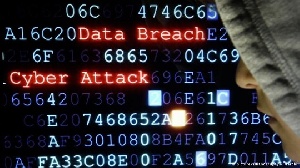In today's educational landscape, cyber-informed leadership is vital as schools adopt digital technologies. Academic leaders must proactively address cybersecurity concerns to safeguard data, maintain digital platform integrity, and create secure learning environments.
Ghana's digital evolution has reshaped education, yet challenges persist with cyber threats. Educational institutions must navigate these risks amidst rapid digitisation.
Risks in adopting digital tools in education
The education sector faces a significant increase in malware attacks, surpassing other industries and showing a high susceptibility to cyber threats.
Vulnerabilities in learning platforms include authentication, availability, confidentiality, and integrity attacks, posing risks like insecure communication, denial-of-service attacks, information leakage, and malicious file execution.
Globally, the education sector lost $3.9 million due to data breaches in 2020, with a 75% surge in cyberattacks the following year.
Ransomware attacks accounted for 30% of breaches, targeting sensitive data like social security numbers, financial information, and intellectual property. Decentralized control structures and open cultures make institutions vulnerable to unauthorized access and malware.
Check Point's mid-year report for 2022 highlighted a 44% increase in cyber attacks against education, underlining the urgent need for informed leadership and robust cybersecurity measures.
School leaders play a crucial role in balancing educational innovation with cybersecurity, implementing technology-driven strategies, investing in awareness programs, and collaborating with IT experts to protect data and ensure uninterrupted educational services.
Effects of cyber threats on educational institutions
In 2022, cyberattacks on schools and universities surged by 300%, reflecting a concerning trend in the education sector. In the United States, one in three educational institutions experienced cyberattacks in the last two years, a higher rate compared to other sectors.
Malware and phishing attacks were prominent threats in both lower and higher education, according to Kon Briefing and Statista's 2023 report ranking education fifth globally in cybercrime incidents.
Verizon's 2022 Data Breach Investigations Report noted 1,241 cyber incidents in the educational sector in 2021, with 282 involving confirmed data disclosure. External sources drove 75% of these attacks, often motivated by financial gain.
High-profile attacks like the ransomware incidents at Howard University and in Broward County underscore the need for robust cybersecurity to protect personal data and prevent disruptions like class shutdowns and Wi-Fi outages.
The consequences of cyberattacks extend beyond data compromise, leading to identity theft, financial fraud, and cyberbullying through the misuse of personal information. These incidents emphasize the urgent need for strong cybersecurity measures in education to safeguard sensitive data and ensure the safety and privacy of students and staff.
Integration of cybersecurity into educational leadership approaches
Aligning cybersecurity with institutional goals is crucial. Leaders should integrate cybersecurity initiatives into strategic plans to emphasize its importance in achieving the institution's mission. Effective policy development is essential; the Ministry of Education should create clear cybersecurity policies, making cybersecurity education mandatory across all levels and fast-tracking policy completion.
At the pre-tertiary level, integrate cybersecurity topics into professional development for staff. Tertiary institutions should collaborate with the Cyber Security Authority to include cybersecurity courses at graduate and postgraduate levels, strengthening defenses and promoting a cyber-resilient culture.
Fair resource allocation and collaboration with cybersecurity experts
Allocating resources, collaborating with cybersecurity experts, and involving the community are key to a robust cybersecurity strategy. Prioritizing cybersecurity in budgeting allows for investment in technology, training, and security protocols.
Collaboration with external experts provides access to current knowledge, while community engagement fosters shared responsibility and awareness.
Continuous assessment and improvement of strategies demonstrate leaders' commitment to adaptability and staying ahead of evolving threats, promoting a secure digital environment and maintaining trust within the school community.
Collaboration with IT experts and institutions like Ghana Telecommunications University and the University of Ghana enhances cybersecurity education. Involving teacher unions, college principals, and relevant leadership ensures resilience against cyber threats.
Educational leaders must make informed decisions, develop policies, conduct regular training, and collaborate with legal experts to comply with regulations and maintain cybersecurity standards.
Their actions fortify institutions against cyber threats and uphold trust in the digital age.
Opinions of Monday, 20 May 2024
Columnist: Eric Kafui Bansah







![NPP Flagbearer, Dr. Mahamudu Bawumia [L] and NDC Flagbearer John Mahama NPP Flagbearer, Dr. Mahamudu Bawumia [L] and NDC Flagbearer John Mahama](https://cdn.ghanaweb.com/imagelib/pics/869/86902869.295.jpg)











